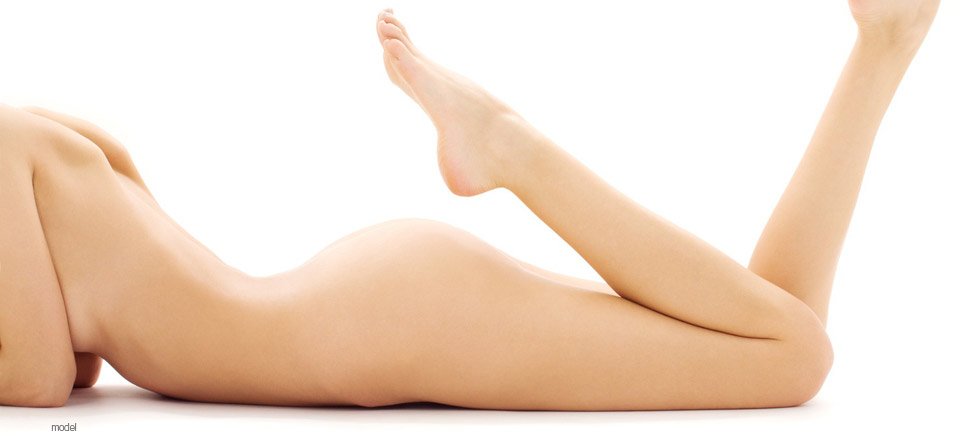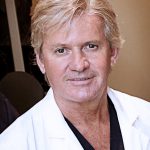When Diet and Exercise Aren’t Enough
Sometimes, no matter how disciplined you’ve been with your diet and exercise regime, certain parts of your body still have unwanted fat. Liposuction can help sculpt the body by removing fatty deposits from the abdomen, hips, buttocks, thighs, knees, upper arms, chin, cheeks and neck. Liposuction is not a substitute for proper diet and exercise; however, it can remove stubborn fat that has resisted traditional weight-loss methods.
How Liposuction Works
Liposuction is a surgical procedure that siphons fat and liquid from a targeted area of the body. After the procedure the tissue has a more sculpted appearance.
With an initial consultation, your doctor will discuss the procedure and how to best achieve the results you desire. Problems areas will be highlighted, and the amount of contouring to take place will be worked out. A chart will be drawn directly on your body to guide the doctor’s efforts.
Anesthetic will be used to minimize your discomfort during the procedure. Depending on your physical condition and preferences, you might receive a local anesthetic to minimize pain in the area being operated on. A sedative may also be issued to manage pain and any anxiety you may experience. General anesthetic may also be available.
Once the anesthetic has taken effect, small incisions are made in the targeted area. A hollow tube, also called a cannula, is guided into the incision below the skin. The doctor moves the cannula gently through the area to siphon fat and liquid. You may be connected to an IV to help replace lost fluids and ensure you don’t become dehydrated during the procedure.
Depending on the amount of fat removed and the time spent on the operating table, you could be able to go home shortly after the procedure. If you undergo a strenuous, lengthy procedure, you may be required to rest overnight in a surgical facility or hospital to recover.

For further information regarding Liposuction, please refer to the Body Contouring section under the Procedures Tab.

Dr. Kenneth Dickie, M.D., F.R.C.S. [C] • Board-Certified Plastic Surgeon
Dr. Kenneth Dickie, Director of the Royal Centre of Plastic Surgery, is a member of the Royal College of Physicians and Surgeons of Ontario and a member of both the American and Canadian Societies of Plastic and Aesthetic Surgery. As Chief of Plastic Surgery at Royal Victoria Hospital and a member of the teaching faculty of U. of T., Dr. Dickie will guide you in making the right decision.
Recovery
Dr. Dickie will tell you to be mobile as soon as possible post-operatively in order to help reduce swelling. A compression garment is worn to help avoid contour irregularity. Most patients can resume their normal activities after one week. However, Dr. Dickie will advise you to avoid strenuous activity for about a month while your body continues to heal. Most of the bruising and swelling usually disappears within three weeks.
Call Us 705.726.2800 • 1.855.726.2800
[iphorm id=”1″ name=”Default Sidebar Form 01″]
Frequently Asked Questions
Who is a good candidate for liposuction?
A good candidate for liposuction is someone who is in good health and who has one or more areas of localized accumulation of fatty tissue. Ideally a good candidate has realistic expectations about what the procedure can accomplish. Some of Dr. Dickie’s most satisfied patients have been individuals with a high BMI (body mass index) because they expected improvement not perfection. There isn’t an age limit for people undergoing liposuction.
Who is NOT a good candidate for liposuction?
People who are excessively obese are not good candidates for liposuction. It is not a cure for severe weight problems. While the procedure can be performed in a troublesome area to improve body contour, it is not a substitute for proper diet and exercise.
What type of results can I expect?
After liposuction, you can expect your body to have an improved sculpted contour. The best results occur when an optimal aesthetic is achieved and the patient is happy with the result. The procedure is not designed to maximize the amount of fat removed, but rather to create a pleasing body contour.
Does liposuction remove cellulite?
Liposuction helps to contour the body, but does not completely eliminate the pre-existing indentation and puckering of the skin that accompanies cellulite. Dr. Dickie will perform liposuction around the indented area and often will transfer fat into the puckered area to smooth the skin’s appearance.
After liposuction, does fat return?
The body does not replace the missing fat cells with new ones following liposuction. If a patient maintains a consistent weight after the procedure, there will be no accumulation of fat anywhere on the body. If a patient gains weight, fat will be distributed equally throughout the body, including the area treated.
Is liposuction permanent?
Fat cells that are removed by liposuction do not grow back. Provided the patient does not gain considerable weight, the contouring effect of liposuction will remain.
What’s the recovery time for liposuction?
Each patient responds to medical procedures in a different way. Modern scalpels and technology have minimized the size and impact of incisions, which has improved recovery times. Most patients can resume normal activity within a week. It is recommended that patients refrain from strenuous activity for a month. Some bruising and minor discomfort may linger for three or four weeks.
Can liposuction be used to lose weight?
No. Liposuction is not a weight-loss tool. Liposuction is a good solution for general figure contouring and to reduce localized accumulations of fatty tissue that don’t respond to normal weight loss. If you are looking for a weight-loss program, speak to our Registered Nutritional Counselor, Jayne Pritchard.
What is the follow-up procedure for liposuction?
Following liposuction, you will be given a compression garment to wear for six weeks. This medical device helps to close the areas where the liposuction was performed and helps to prevent surface irregularities in the skin as healing takes place.
